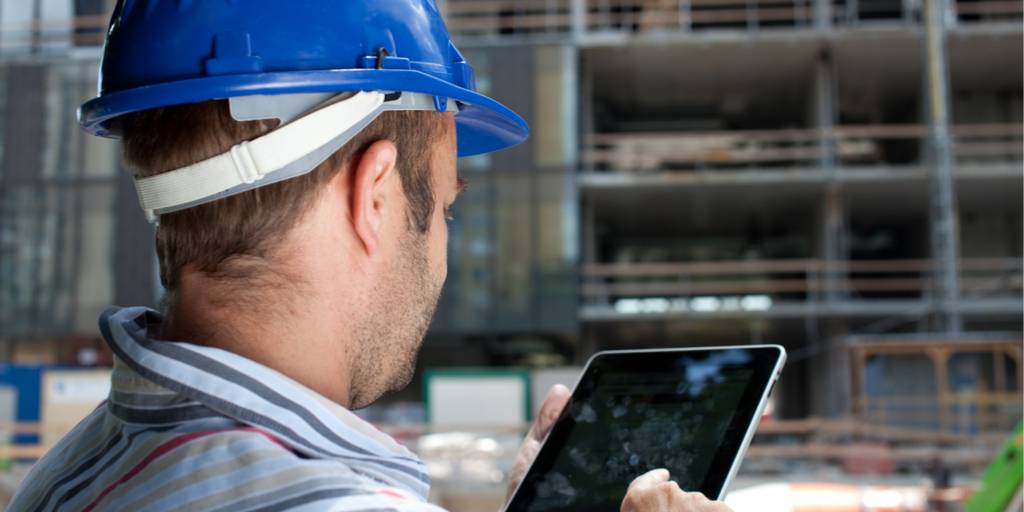The Latest Construction Technology Reshaping the Industry
Construction companies are handling expansion by embracing new technology in construction. New tech persists in forcing construction companies to...

Construction technology can add value to your business when struggling to transition through each phase of a project. From bidding new jobs to blueprint apps, workforce time management, and exchanging payment documents, there are many free construction software options, as well as paid ones. This can make everyone’s job easier as you work your way from bidding, into project management, and finally to getting paid.
Contractors don’t have to bid on every project they come across. Winning a job that your company can’t adequately perform could result in financial losses. Contractors must crunch the numbers to determine if they’ll make an acceptable profit on every project. Sometimes, that could mean dumping a project for a new one if the numbers don’t add up in your favor.
The scope and requirements of a job should also be considered during the preparation of bidding. If your business doesn’t have the capacity to take on the project, move on and find the right one. It can be difficult to find the right balance of bidding and winning enough projects. If you start bidding and winning too many jobs, you might be able to deliver on projects. On the same token, you want to make sure you have enough work to stay in business.
Construction bids can easily be rejected if you don’t properly submit all required documents. On some public or private projects, GCs may be required to submit bid bonds to guarantee follow-through if they’re selected.
Contractors may have to get prequalified to bid if it’s required. Some projects will require you to attend a mandatory pre-bid meeting. The most important requirement in the bidding process is to submit the bid by the due date and time. In some cases, the simplest details could make all the difference in getting your bid approved, like properly signing and delivering the bid on time.
Organizing your bids or estimates in a manual process, whether on paper or with Excel spreadsheets, is time-consuming and prone to error. When a construction company has no bidding software in place, they risk spending a lot of time comparing quotes - a task that bidding software could tackle in seconds.
Bidding technology can offer your business a quantifiable edge by crunching the numbers on every project. They typically allow you to adjust labor units and estimate difficulty factors per installation of each specific task. This all helps determine whether or not you’ll make a profit by organizing job costs efficiently.
Construction bidding technology also makes it easy to send an invitation to bid. They typically allow you to receive bids, send requests for more information, and get updates on the progress of a bid. GCs can share project documents with subs and collaborate on estimating.
Subs can receive more invitations to bid from GCs using the same software. Bidding software also helps subs by consolidating company qualifications, viewing a project’s history, and accurately submit project and qualification information.
The lack of communication in construction is far too common and causes problems that trickle down into every corner of a project. Without good communication, change orders are lost, work is delayed, and tasks get overlooked or duplicated.
Any construction project could have hundreds of workers gathered on one job site, each one with different roles and responsibilities. This means GCs, project owners, and suppliers have to work together, creating a collaborative plan that keeps everyone moving a project forward.
Coordinating hundreds of individual efforts is no easy task, especially when most contractors are working with various technologies and software. Some contractors might not use technology at all, which only adds to coordination problems.
Most new construction technology focuses on how the project is designed, not how it’s executed. When companies stick to pen and paper for executing projects, they set themselves up for communication mistakes. Daily reports and blueprints can get lost in a pile of paperwork, and subs end up working from outdated designs that the architect or owner changed days before.
Choose a communication process that works for both parties involved. Construction software can simplify communication into one platform. Every contractor and supplier on a project should be operating from a single point of truth, using a unified approach to communication.
Modern construction technology also solves most collaboration issues. Project management software can improve communication and collaboration by uniting everyone on a single platform. Both stakeholders and contractors can access the same software to check on project status from anywhere. When paperwork becomes digital, everyone on a project can access the same information in real time. Information is transferred with zero delays, ensuring that everyone is working from the same plans.
New technology can also improve the coordination of tasks. Contractors need to coordinate on deadlines and make sure that punch list items don’t go unfinished, or that they’re not duplicating tasks. Project and office managers need to coordinate on deadlines for liens and notices. To improve coordination, project managers can communicate their goals with project owners, GCs, and other subs by uniting under one software program.
On a construction project, payments flow downhill from the lender or owner, through the GC, to the subs and suppliers. Every extra step that the money has to take is another opportunity for failure, opening those at the top of the payment chain to the risk of liens or bond claims.
Everybody on a construction project, from the owner down to the smallest supplier, wants to complete the job without a payment problem. But when the GC and property owner aren’t aware of every sub and supplier that’s on the job, it can become a nightmare to make sure every party gets paid on time.
Construction payments can take a long time. In 2019, the average days sales outstanding (DSO) was 83 days. This delay causes a serious cash flow crunch for subcontractors and suppliers, who may be relying on progress payments to complete the next portion of the job. When payments are late, they use savings or take on debt to pay their bills, putting their business at risk, and stressing their relationship with the parties at the top of the project.
The larger a project is, the harder it becomes for the GC to collect, organize, and track payment applications and lien waivers from every subcontractor and supplier on the job. Misplacing payment documents or missed payments opens a property up to mechanics lien filings, putting the entire project at risk.
Construction payment software can help parties exchange documents easily on a project of any size. Software can give the GC the ability to see every party on the job, organize pay application documents, and collect lien waivers from everyone on the project. Subs and suppliers can easily send preliminary notices and other documents that improve communication and submit the right documents at the right time.
Routine bookkeeping practices can be made more efficient with construction accounting software, which can handle job costing, cash flow reporting, and more. Software can give office managers more time to support field staff or reach out to new clients. It can automate data entry and spreadsheet calculations. With the extra time, a construction business owner or bookkeeper can dive deeper into financial reports to make better business decisions.
A construction company’s accounts receivable department can also benefit greatly by adopting new construction technology. Tracking outstanding invoices digitally makes it easy to identify payment problems early on and solve them before it’s too late. Technology can notify you when an invoice hasn’t been paid - before the deadline to file a mechanics lien is up.
Most construction software is run through the cloud, which stores information from all parties into one platform. Contractors and suppliers can all access the same data in real time from any computer or device, making sure everyone is on the same page.
Construction software can give your business cost and time savings in the long run. A variety of construction software options are available, so do some research before training your employees and customers. The right construction technology will not only improve your own business processes but integrate seamlessly into the software that the GC or other subcontractors on the job are already using.
 Justin Gitelman is the Content Coordinator at Levelset, where over 500,000 contractors and suppliers connect on a cloud-based platform to make payment processes stress-free. Levelset helps contractors and suppliers get payment under control, and sees a world where no one loses a night’s sleep over payment.
Justin Gitelman is the Content Coordinator at Levelset, where over 500,000 contractors and suppliers connect on a cloud-based platform to make payment processes stress-free. Levelset helps contractors and suppliers get payment under control, and sees a world where no one loses a night’s sleep over payment.
Construction companies are handling expansion by embracing new technology in construction. New tech persists in forcing construction companies to...
Matt Strazza, President & CEO of ConstructConnect discusses Women's History Month, Women in Construction Week, and ConstructConnect's Women in...
We've got construction site safety tips based on the 10 most cited OSHA standards in the construction industry. Read construction management tips for...
Construction is a complex industry and understanding construction law can be tricky. Find out when you should engage experienced construction legal...